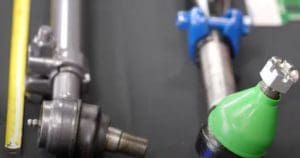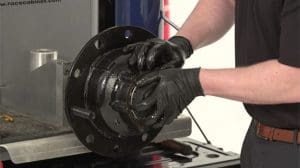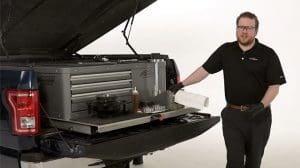In the fast-paced world of commercial trucking, effective fleet management starts with timely pickups and deliveries—but it doesn’t end there. It’s a multifaceted effort that continually strives for process improvement, optimized productivity, enhanced safety measures, and of course, maximized revenue. It’s no simple task.
And while there’s no “easy” answer or “silver bullet” to overcoming the daily challenges that fleet managers face, there are some key steps and strategies we’d like to highlight—from preventive maintenance to automation—that can serve as helpful guidance to better your fleet management practices in the months ahead.
Fleet preventive maintenance is key
Maintaining a fleet isn’t just about fixing things when they break down. It’s about working to prevent those breakdowns in the first place. This includes using quality parts and components on your vehicles, staying on top of regular maintenance cycles, and keeping up with TMC standards. Fleet preventive maintenance is a proactive approach that not only ensures the safety of your drivers and cargo, but it also aims to minimize unexpected downtime and repair costs. To put it simply, healthy maintenance practices are key to safe operations and optimal over-the-road performance for your vehicles.
The first step in preventing breakdowns and other issues is to use quality parts. Unfortunately, there are “lookalike” parts in the industry that do not use the same materials and are not put under rigorous STEMCO testing and quality control. It might seem like you’re saving money on the front end of equipment cost, but if the equipment isn’t reliable, you’ll often pay much more later on when it impacts shipments, downtime, and your reputation. Make sure you’re using certified, quality products, and you’ll have your best foot forward.
Reduce fleet fuel costs…at all costs!
Fuel costs can significantly impact the bottom line of any trucking operation. In fact, fuel costs are one of the most challenging expenses that fleet managers face year-to-year. This is why reducing fuel consumption should be a top priority.
Helpful strategies such as driver training on fuel-efficient driving practices and investing in fuel-efficient vehicles can lead to significant savings. Additionally, keeping up on standard maintenance checks such as proper wheel bearing adjustment, proper tire inflation levels, and changing out fluid and lubricant levels regularly can really make a difference.
Fleet Route Optimization
Another practical step fleet managers can take to save on fuel is proactive route planning. Whether done manually in a spreadsheet, or by using optimization software or apps, a strategic approach can lead to notable fuel savings. As fluctuating fuel prices only seem to complicate the issue further, this is another area where fleet managers can take proactive steps to maintain some control while increasing fleet performance and profitability.
Automated fleet management is here to stay
It may come as no surprise that the future of fleet management lies in automation. The main reason is that automated solutions offer consistency, efficiency, and accuracy. These three key benefits can truly empower trucking companies to stay ahead of the curve in a competitive industry. The reason? Introducing quality data into your fleet operations can significantly impact overall fleet efficiency.
The more data you can capture, the more visibility you have for what you’re doing right, as well as any blind spots you may have or hidden costs that you may be missing. And in an industry where time is money, automation can help lighten the load of tedious admin work or other stressful steps that might be slowing your management processes down.
Choose the best fleet management software
Lastly, in today’s digital age, the right fleet management software can make all the difference in optimizing your fleet operations. From fleet tracking to scheduling, choosing the best software solution for your company’s needs can be crucial.
Fleet Tracker
Real-time fleet GPS tracking allows for improved visibility into the location and status of each vehicle in your fleet. This not only enhances safety and security, but also enables more efficient route planning when monitoring things like weather conditions. Adding this type of software can help lead to increased productivity and revenue.
Fleet Scheduling Software
Efficient fleet scheduling software provides optimal coordination of drivers, vehicles, and routes. This is a great way to minimize downtime and stay proactive day-to-day. By streamlining your scheduling processes, trucking companies can see notable improvement in their overall operational efficiency and ultimately, it’s a healthy step that can protect your bottom line.
Fleet Reporting Made Easy
Most importantly, automated fleet management systems provide comprehensive reporting capabilities. This is especially valuable given that this type of fleet data is what leads to key business decisions for trucking fleets. By having access to better quality reporting, fleet managers have clear insight into metrics such as fuel consumption, vehicle performance, and even individual driver behavior. This can really give trucking companies peace of mind to make informed decisions on the things that matter most to their fleet.
Stand out from the competition
Improving fleet management is a multifaceted effort that requires putting the right systems and strategies in place. By prioritizing steps like preventive maintenance, reducing fuel costs, choosing the best fleet management software, and embracing automation, trucking companies can boost their productivity, safety, and their revenue, while at the same time reducing emissions and fleet costs. And in a competitive industry where reputation matters, these are decisions that can help your business stand out from the crowd, while attracting and retaining the kind of support that will keep your fleet running strong for years to come.









